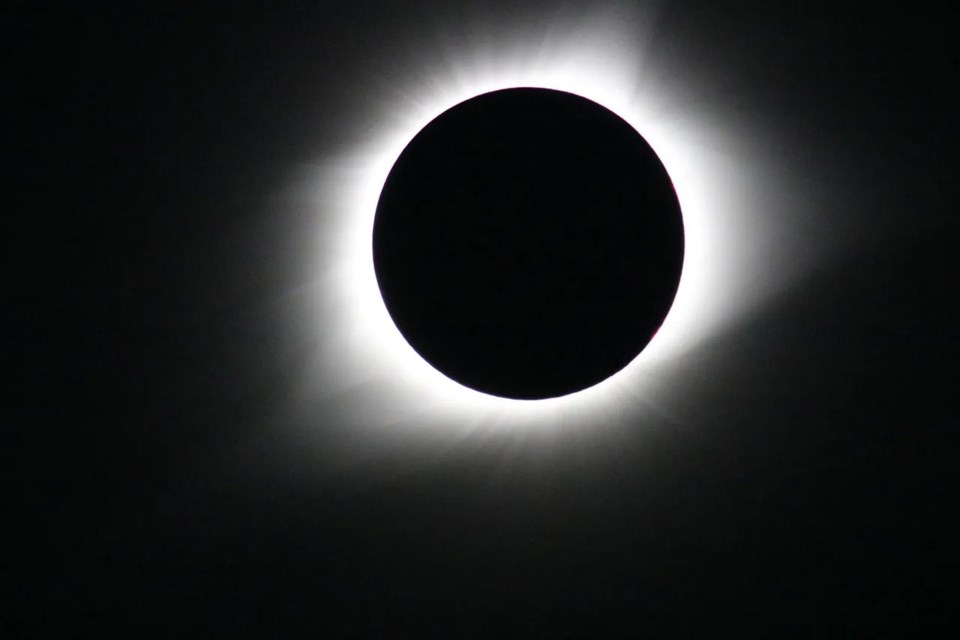School District 43 (SD43) will take safety precautions to limit or adjust outdoor time for more than 30,000 students, staff and teachers on Monday, April 8.
The measures are being taking to shield the cohort from the sun during the total solar eclipse, when the moon will pass between the Earth and the sun — thereby blocking some or all of the sun’s rays from reaching Earth.
In an email to SD43 parents, superintendent Patricia Gartland wrote that looking directly at the sun during the eclipse can result in permanent damage or blindness.
“In Metro Vancouver, about 17 per cent of the sun will be covered and our view will likely be limited due to cloud cover and rain in the forecast,” she wrote.
“Depending on local conditions, outdoor time for students may be limited or adjusted during the eclipse for improved safety.”
The total solar eclipse is a rare phenomenon that will carve a path of darkness eastward across North America, starting in Mazatlan at 11:07 a.m. local time and ending in Gander, N.L., at 5:12 p.m. local time.
The cosmic event requires the sun, moon and Earth to be in the right alignment for the moon to cast a shadow on the planet.
According to NASA, the total solar eclipse will span between one and four-and-a-half minutes; in Canada, the longest eclipse will be in Sherbrooke, Que., where it will last three minutes and 26 seconds.
Many gatherings are planned across North America, and most hotels along the eclipse path are booked by viewers. In Dallas, American astrophysicist Neil deGrasse Tyson is the guest speaker at the Fair Park Cotton Bowl Stadium.
Niagara Falls in Canada is expecting more than one million visitors while, on the U.S. side of the falls, National Geographic is listing the observation tower as a prime viewing area.
Monday’s eclipse will be the last total solar eclipse visible from the contiguous U.S. until 2044.
Below, the eclipse stages:
- Partial eclipse
- The moon slowly covers the sun. Darkness falls.
- Diamond ring
- The last bit of sunshine lessens to a point of light.
- Baily's Beads
- Any remaining light sparkles through deep valleys on the moon's edge.
- Totality
- Day turns to night. Be aware of weather changes in temperature, the wind and the clouds, as well as in birdsong.
- Corona
- The sun’s outer layer is visible from behind the moon





